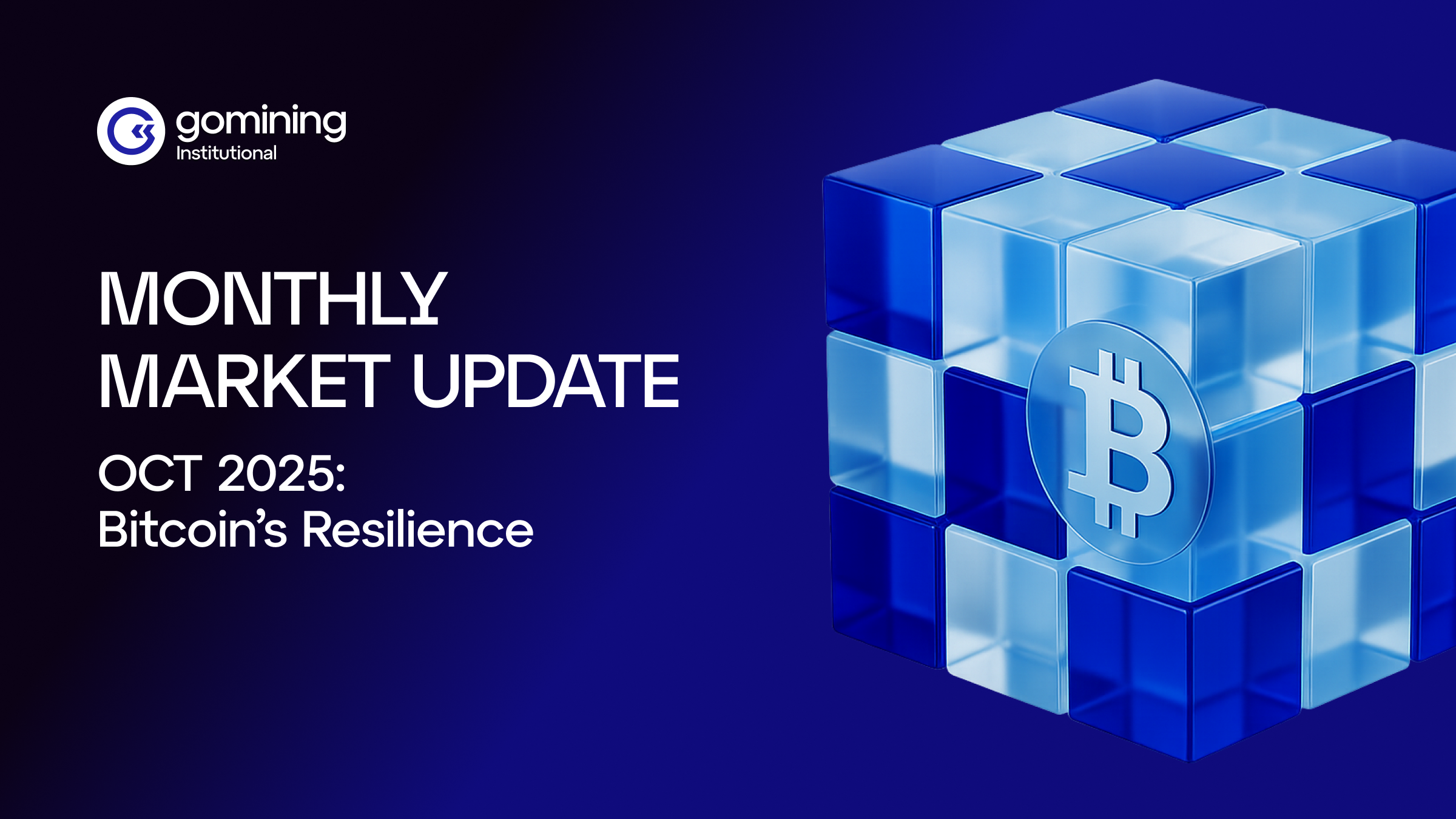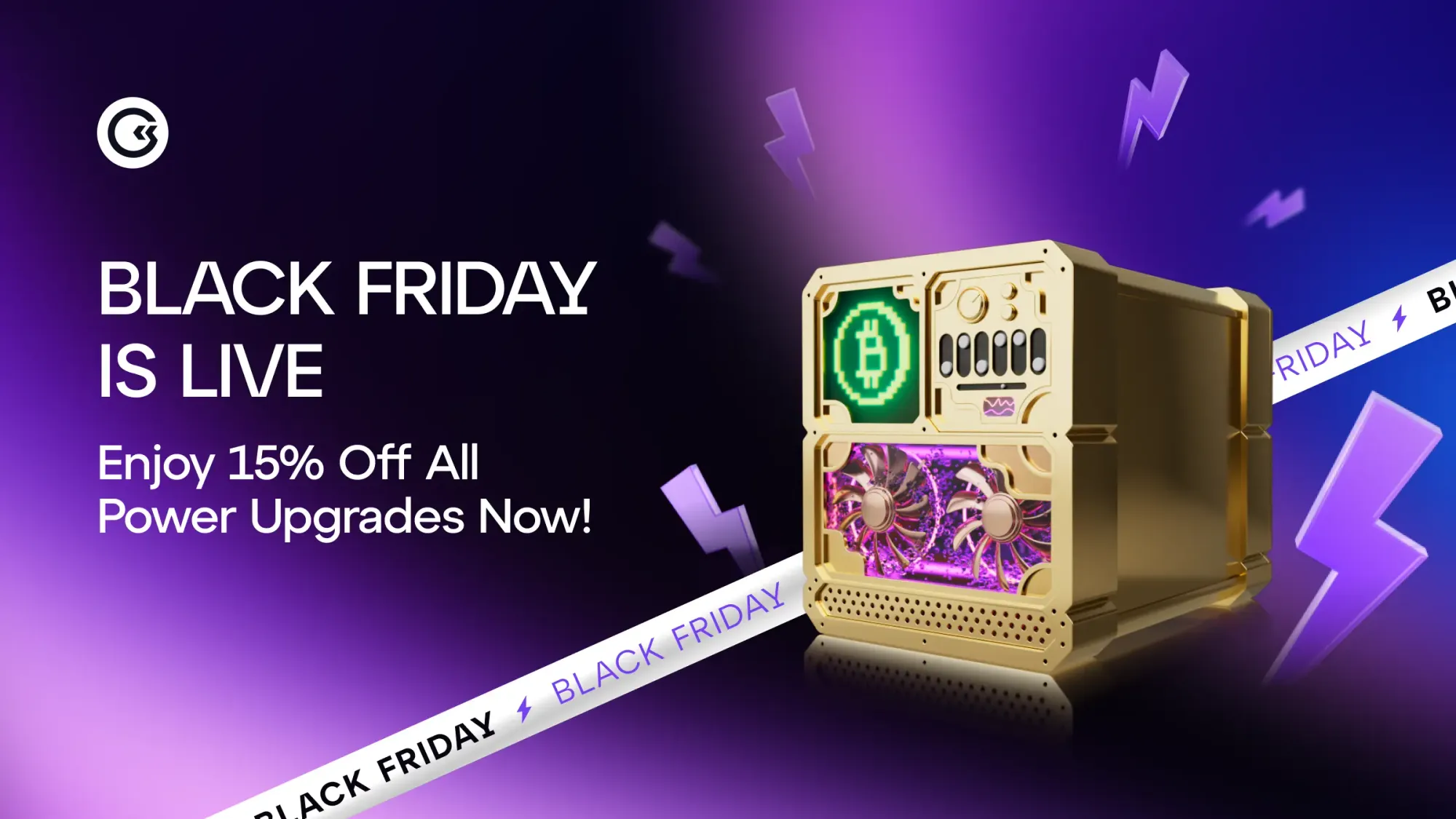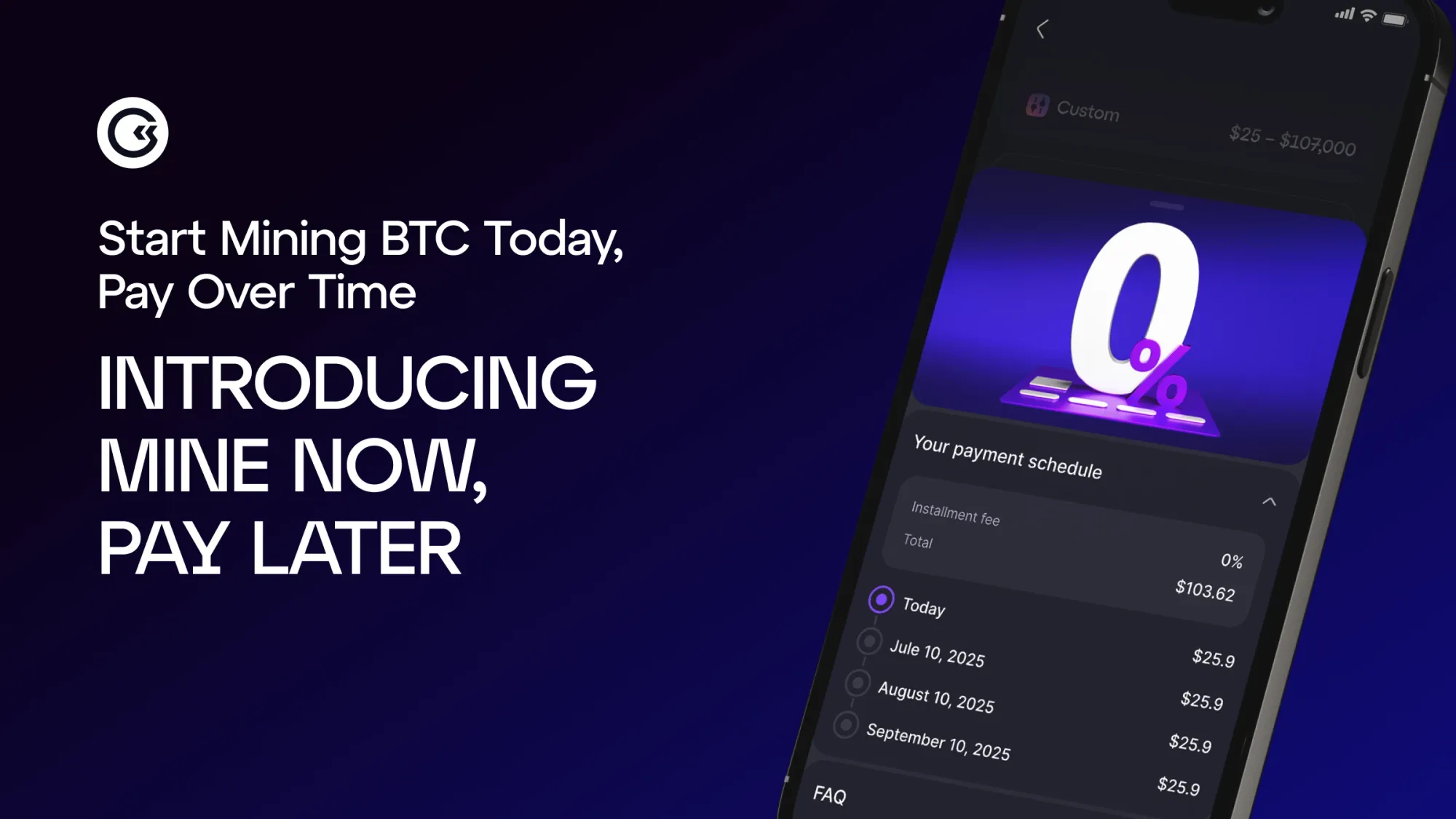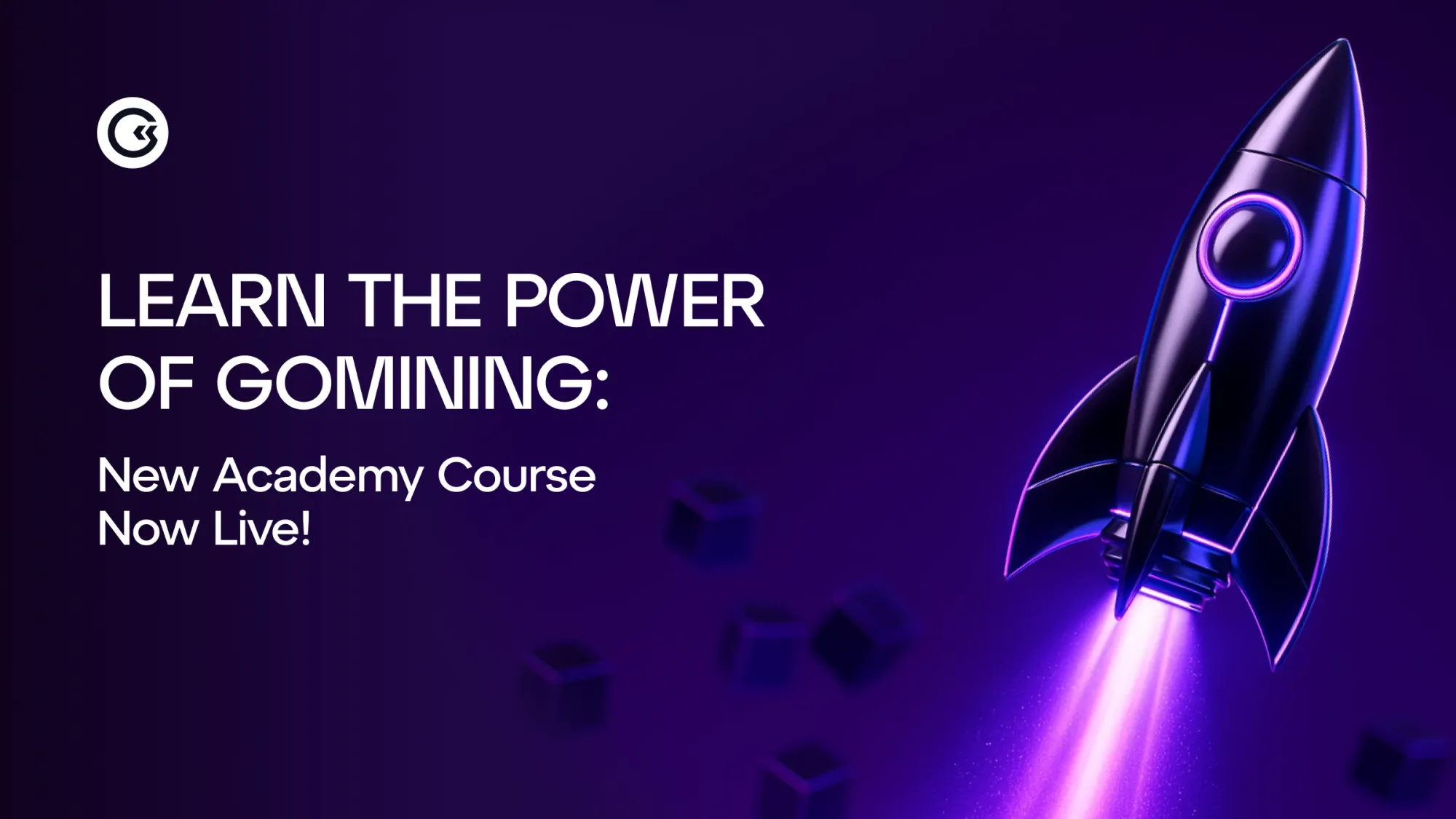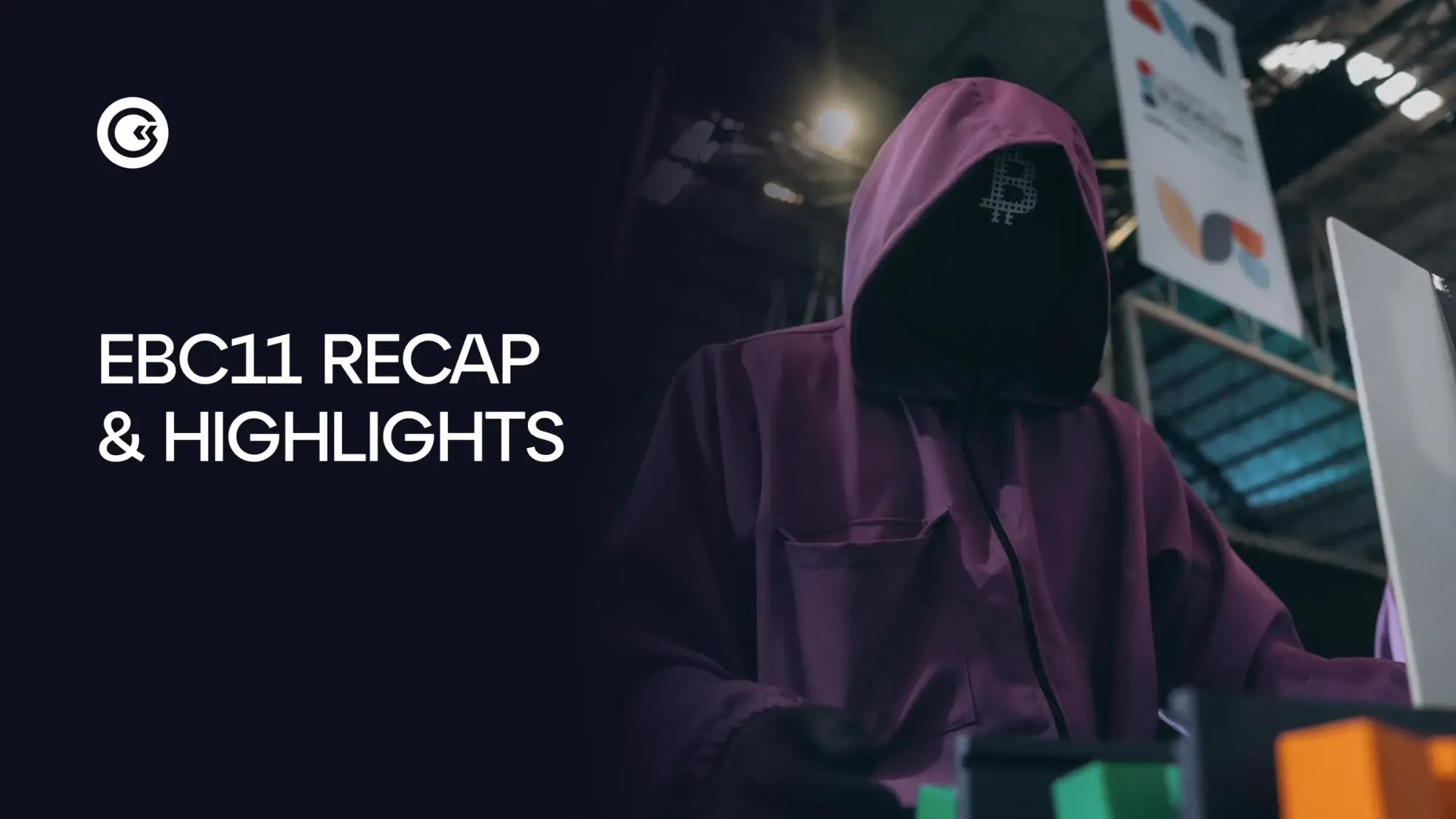A Turning Point in the Bitcoin Cycle?
In October the market witnessed Bitcoin’s explosive run to $126,300 only to meet resistance, triggering a sharp correction that tested key support levels. While the broader trend remains intact, signs of rotation in global markets are emerging as the BTC/Gold ratio visited levels historically linked to major Bitcoin reversals. Meanwhile, institutional and industrial signals continue to flash green. JPMorgan’s move to accept Bitcoin as collateral, American Bitcoin’s $160 million accumulation, and a 100 EH/s network surge all point toward growing adoption and resilience. The Core vs. Knots debate also started to heat up as pools are picking sides. Elsewhere in the market, a solo-miner hit the jackpot mining a block worth over $347,000. From institutional adoption to protocol-level debates, October captured both the scale and diversity of Bitcoin’s evolving ecosystem.
TLDR;
BTC: $109,555 ▼ -3.9%
Open: $114,076 | Close: $109,555 | High: $126,300 | Low: $103,500
Hashprice $44.62/PH/day ▼ -12.1%
Open: $50.75/PH/day | Close: $44.62/PH/day | High: $52.50/PH/day | Low: $45.98/PH/day
Hashrate 1,118 EH/s ▲ 6.1%
Open: 1,054 EH/s | Close: 1,118 EH/s | High: 1,128 EH/s | Low: 1,018 EH/s
Bitcoin Testing Crucial Support Levels
On October 6, Bitcoin reached a new all-time high near $126,300, but the rally was short-lived. Instead of continuing into price discovery, the market reversed sharply, dropping below $104,000, a 17.7% correction from the peak.
During the decline, Bitcoin came close to testing its weekly 50-week moving average (MA), a key technical level it has held above since March 2023. This line has only been touched three times in the past two and a half years, underscoring its importance as a support zone for traders and long-term holders alike. A decisive close below it would have signalled weakening market momentum and a potential trend shift.
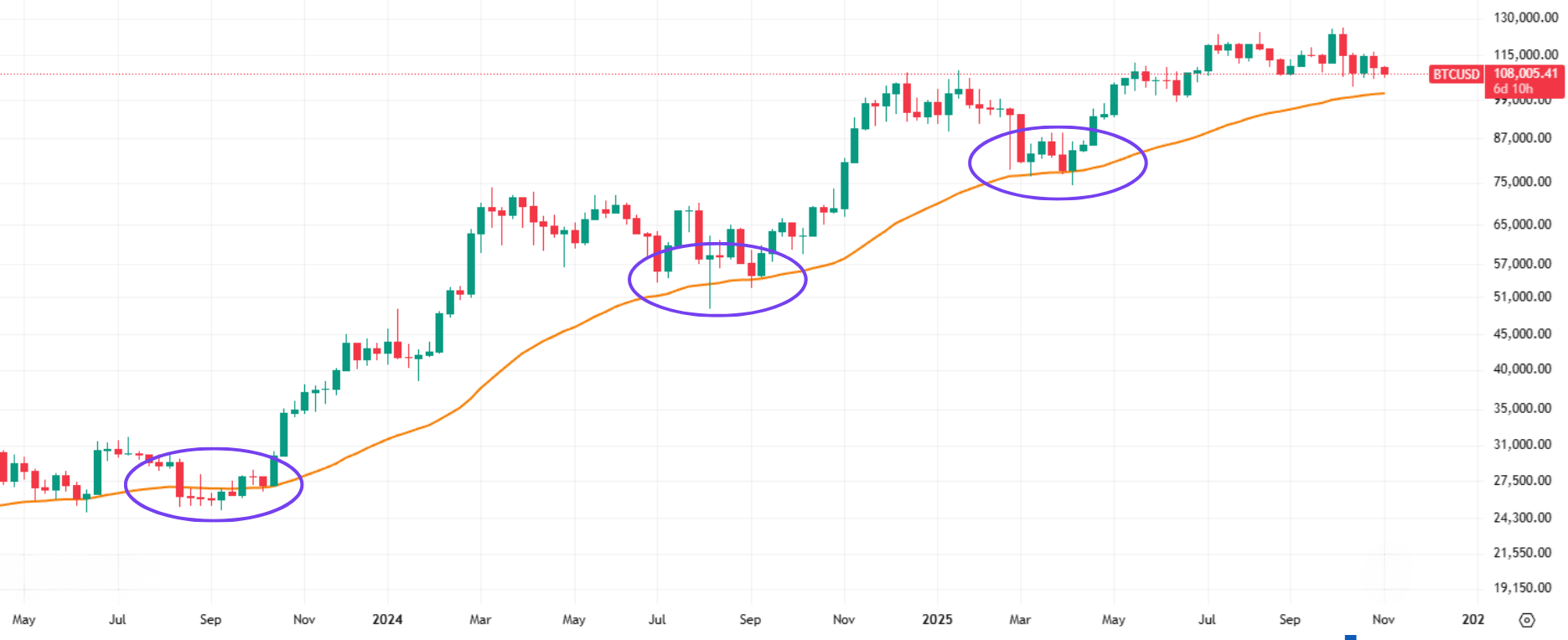
Bitcoin Neared the 50-Weekly Moving Average in October (source: TradingView).
Fortunately, that breakdown never came. Bitcoin bounced strongly from the October lows, reclaiming roughly 9% to trade back around the $115,000 level, suggesting that buyers are still defending key support and the broader uptrend remains intact.
Rotation in Hard Assets
The breakout story of 2025 hasn’t been a tech stock or digital assets—it’s been gold. The precious metal has been on a tear, smashing through all-time highs going above $4,300 per ounce and becoming the best-performing major asset of the year, up nearly 66% year-to-date—its strongest run in almost fifty years. Gold has quietly fulfilled its purpose as the ultimate inflation hedge, thriving amid rising debt, loose monetary policy, and geopolitical tension.
But an interesting signal has emerged. In October, the BTC/Gold ratio dropped to levels typically seen at major Bitcoin cycle bottoms. According to Joao Wedson of Alphractal, the ratio oscillator hit -1.8, a reading that has historically marked prime Bitcoin-to-gold entry points. Similar conditions in 2018 and 2022 preceded massive Bitcoin rallies in the months that followed. A few days after Bitcoin formed its local October bottom, gold began to cool off below $4,000. The question now is whether we’re witnessing the start of a hard asset rotation, from gold’s dominance to Bitcoin’s resurgence. If the BTC/Gold rotation accelerates, it could mirror the 2020–2021 pattern, when capital migrated from traditional safe havens to digital stores of value, catalyzing Bitcoin’s next leg higher.
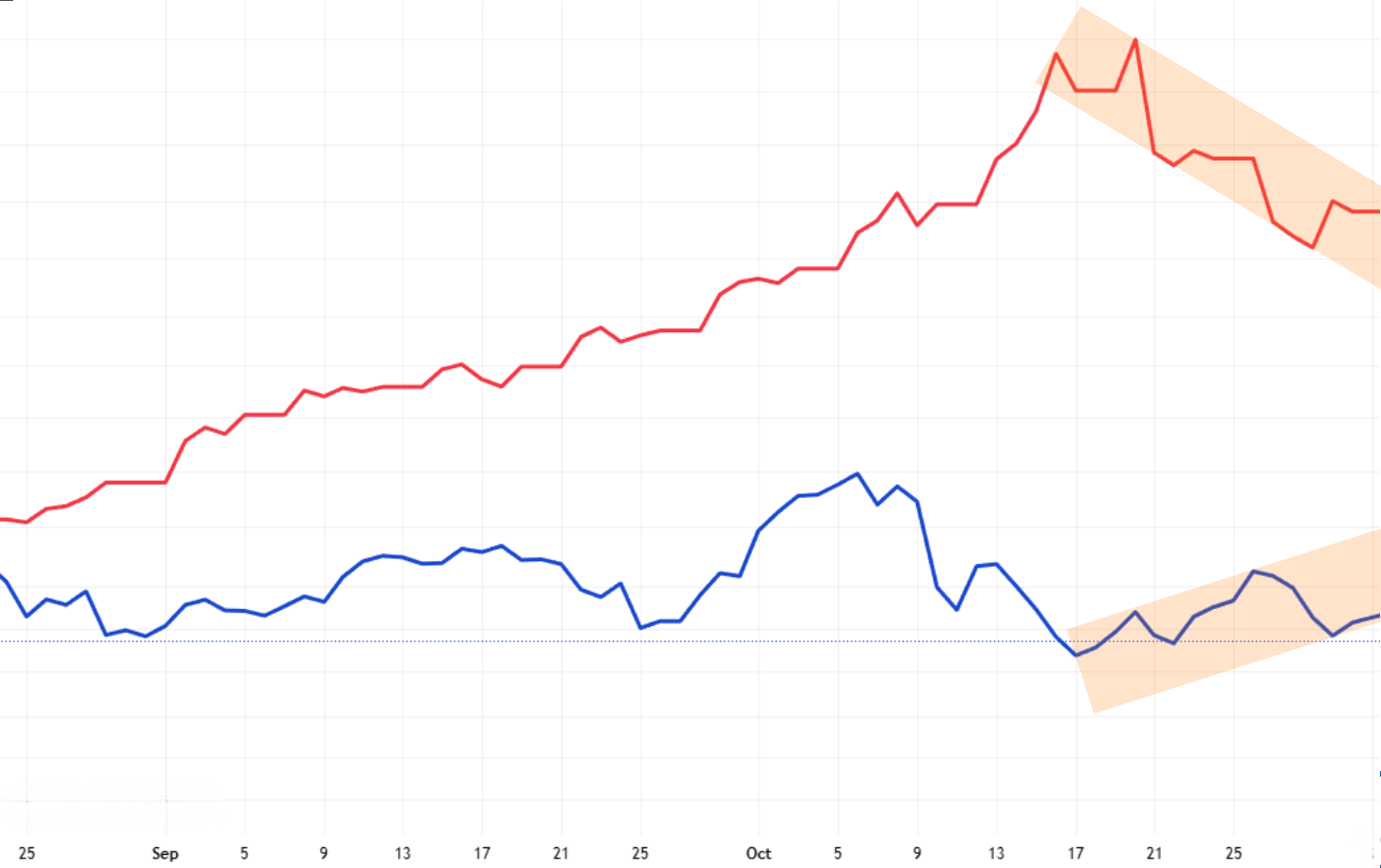
While Gold Started Falling, BTC Started Trending Upwards (Source: TradingView).
JPMorgan to Accept Bitcoin and Ethereum as Loan Collateral
By the end of 2025, JPMorgan Chase will allow institutional clients to use Bitcoin (BTC) and Ethereum (ETH) as collateral for loans — a major step in Wall Street’s integration of digital assets.
The assets will be held by third-party custodians to minimize operational and counterparty risk. This follows JPMorgan’s earlier acceptance of crypto-linked ETFs as collateral and signals growing confidence in crypto’s role within traditional finance.
The significance goes beyond a single bank, it signals the normalization of Bitcoin as a financial asset with credit utility, not just investment appeal.The move highlights a broader shift among major banks like Morgan Stanley, BNY Mellon, and Fidelity, all expanding crypto services. For institutions, it means improved liquidity and flexibility, and for the industry, a clear signal that digital assets are becoming mainstream financial instruments.
Trump Brothers’ American Bitcoin Joins Top 25 Public BTC Holders
American Bitcoin Corp. — the Nasdaq-listed mining and accumulation firm co-founded by Eric and Donald Trump Jr. — has added 1,414 BTC (≈$160 million) to its reserves, bringing its total holdings to 3,865 BTC worth nearly $450 million. The move places the company among the top 25 public Bitcoin treasuries, just behind Gemini Space Station and ahead of OranjeBTC, according to BitcoinTreasuries.net.
The company plans to introduce a new transparency metric called “Satoshis per Share,” which will show investors how much Bitcoin backs each outstanding share. Executive Chairman Asher Genoot noted that American Bitcoin’s in-house mining operations give it a cost advantage over firms that rely solely on market purchases, lowering its average acquisition cost per BTC. Part of the firm’s Bitcoin holdings are pledged for miner acquisitions under a Bitmain agreement, signalling ongoing expansion. The move underscores how corporate treasuries are expanding their Bitcoin strategies from balance-sheet holdings to vertically integrated accumulation and mining models.

Eric Trump, who posted on X that the team is “just getting warmed up.
Network Hashrate Jumps 100 EH/s, Outpacing 2023 and 2024 Growth
After reaching 1,078 EH/s in late September, Bitcoin’s network hashrate held steady for the first half of October. That pause didn’t last. In just over a week, hashrate surged by another 100 EH/s, setting a new all-time high of 1,128 EH/s on October 21st.
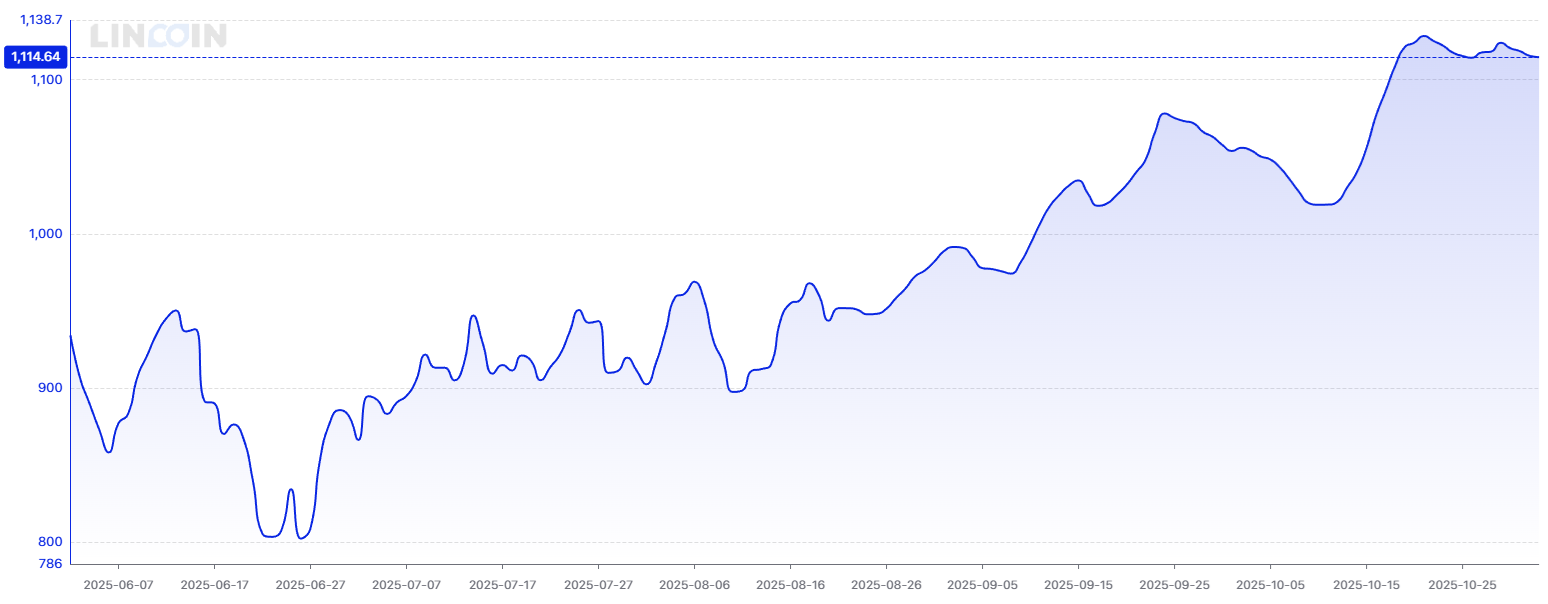
Network Hashrate Marking Another ATH (Source: Lincoin Lens)
So far this year, the network has expanded by 334 EH/s, already exceeding the total annual growth recorded in both 2023 and 2024. The acceleration underscores the aggressive pace of machine upgrades, facility buildouts, and efficiency gains across the mining sector, as operators race to stay competitive in an increasingly industrialized landscape.
Core vs. Knots: The 83-Byte Divide Heating Up
A new fault line is emerging in Bitcoin’s technical governance and it matters more to miners than it may first appear. The debate centers on the 83-byte OP_RETURN limit, a long-standing Bitcoin Core policy restricting how much arbitrary data can be embedded in a transaction.
Developers aligned with Bitcoin Core propose removing this limit entirely, arguing that the fee market (not node policy) should determine what data gets mined. Opponents, led by Bitcoin Knots developer Luke Dashjr, warn that dropping the limit will turn Bitcoin into a data-storage layer, increase node costs, and hurt decentralization.
For miners, the implications are significant. A relaxed limit could expand fee revenue by attracting data-heavy transactions such as inscriptions, rollups, or timestamping services. It also reduces the need for inefficient workarounds that bloat the UTXO set. But it comes with trade-offs: heavier blocks, greater bandwidth requirements, potential regulatory scrutiny, and the risk that blocks take longer to propagate across the network which in turn could cause a miner’s block to be replaced by another one before it’s confirmed, resulting in lost rewards.
The discussion is no longer theoretical, pools are taking sides. With SpiderPool joining F2Pool and MARA, roughly 24 % of global hashrate now accepts OP_RETURNs larger than the traditional 83-byte policy limit. If more follow, Bitcoin’s block-space economics could shift again, reshaping how fees accrue to miners and how data competes with monetary transactions.

~24 % of global hashrate now accepts OP_RETURNs > 83-byte policy limit (source: X account @mononautical).
Whether this trend strengthens miner revenue or fragments the network will depend on how quickly the rest of the ecosystem aligns. What’s clear is that miners are no longer just hashrate providers, they’re becoming gatekeepers of what type of Bitcoin economy gets built next. Ultimately, this debate highlights a maturing ecosystem where miners’ policy choices influence not only revenue but also the future design space of Bitcoin itself.
Canaan Unveils A16 at Blockchain Life 2025
Canaan Inc., a global leader in high-performance Bitcoin mining hardware, made waves at Blockchain Life 2025 in Dubai. The company unveiled the newest powerhouse in its Avalon lineup. the A16. Designed for next-level efficiency and reliability the upgraded A16 delivers a hashrate of 300 TH/s. Combining smarter energy optimization, tougher stability, and improved performance for industrial-scale mining. The new model reinforces the firm’s position at the forefront of ASIC development.
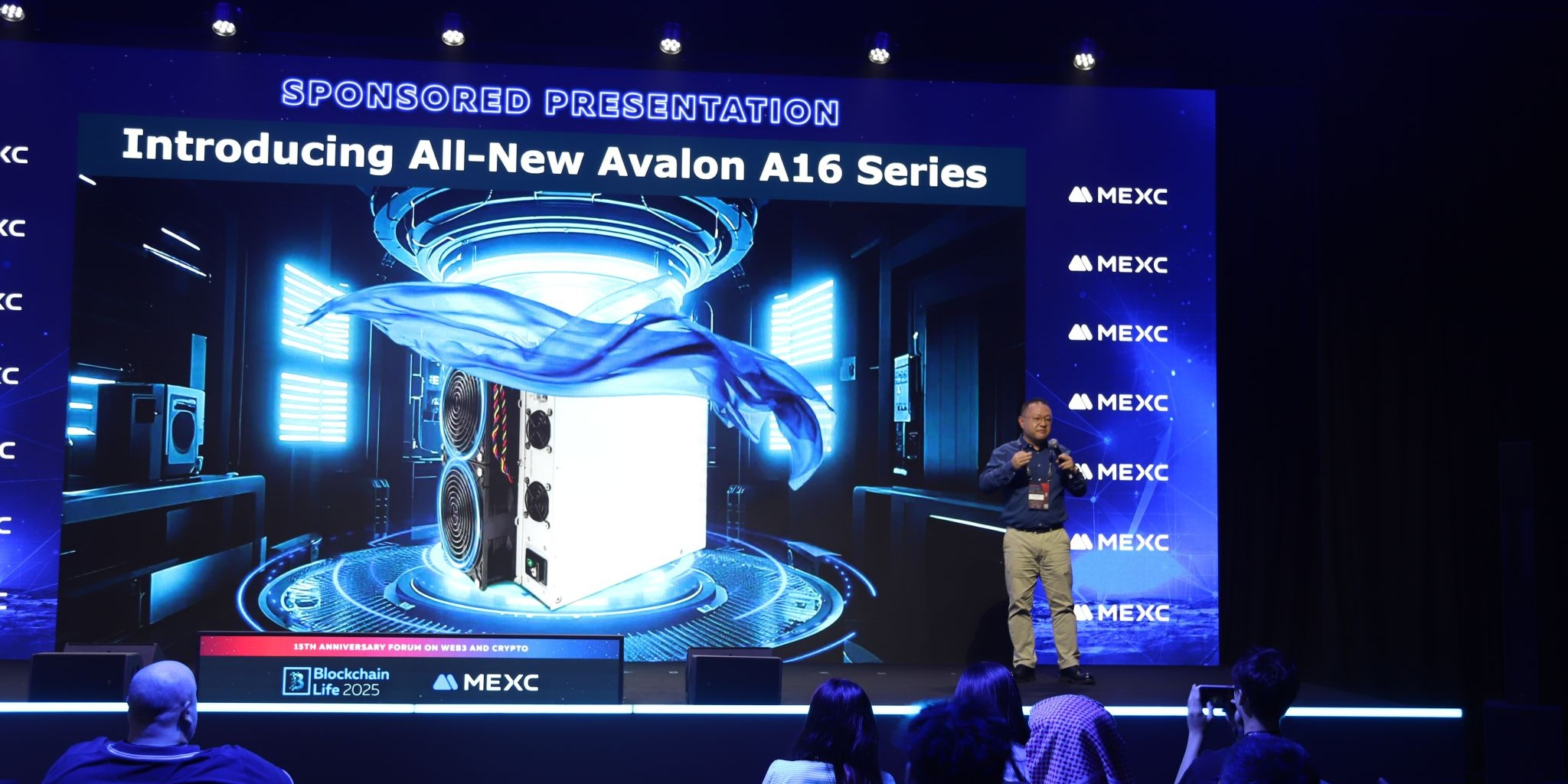
A16 Reveal by Canaan Inc During Blockchain Life 2025 (source: Canaan).
Altcoin ASIC manufacturer Enters Bitcoin Mining Hardware Game
Alongside Canaan’s announcement, there was more movement in the ASIC hardware space during the month of October. BGIN Blockchain revealed a major milestone in developing its first Bitcoin mining machine, the BT1 series, scheduled for launch in early 2026. The company has completed design and simulation verification and has now entered the tape-out phase — the final step before chip production begins.
BGIN’s global R&D team, known for its work on high-performance altcoin miners such as the KS7 (which doubled performance over previous generations), is now applying its expertise to Bitcoin. The BT1 series aims to set a new benchmark for efficiency and reliability, marking BGIN’s official entry into the Bitcoin mining market under its ICERIVER® brand.Together, these developments show how hardware innovation remains the backbone of mining competitiveness, even as financial and policy themes dominate headlines.
Solo Miner Strikes Gold
At block height 920,440, a solo miner defied astronomical odds, mining a full Bitcoin block entirely on their own using a self-hosted Umbrel pool and an open-source NerdQaxe++ miner. It’s a striking reminder that even in an era of industrial-scale operations, decentralization and luck can still align for the individual miner. The NerdQaxe++ delivers roughly 5 TH/s of hashrate, compared to Bitcoin’s total network hashrate of around 1,100 EH/s, or 1.1 billion TH/s. That means the miner who found the block represented just 0.00000045% of the entire network—a microscopic share that underscores how extraordinary this solo win truly was.
Solo mining pits a single miner’s rig against the entire network, an astronomical long shot, but one that occasionally pays out in full, as it did here. Win, and you earn the entire 3.125 BTC block reward plus transaction fees, paid directly to your wallet, no sharing, no middlemen. The payout for block 920,440 totalled 3.141 BTC (~$347,000).

Solo Miner Mining Block 920440 (Source: Mempool.space & X Account @TheSoloMiningCo).
So why do miners still go solo? For some, it’s about ideological sovereignty, validating their own blocks and securing rewards directly from the protocol. Others pursue zero fees, asymmetric upside, or simply the thrill of finding a block alone. Even large-scale miners sometimes allocate a small portion of their hashrate to solo mode as a variance hedge, balancing steady pool income with a chance at the jackpot.
October underscored the duality of Bitcoin’s landscape, macro rotation, institutional expansion, and ongoing technological evolution. As we move into the final quarter, all indicators point toward a maturing yet increasingly competitive industry.
Nico Smid – Research Analyst GoMining Institutional.
November 4, 2025


